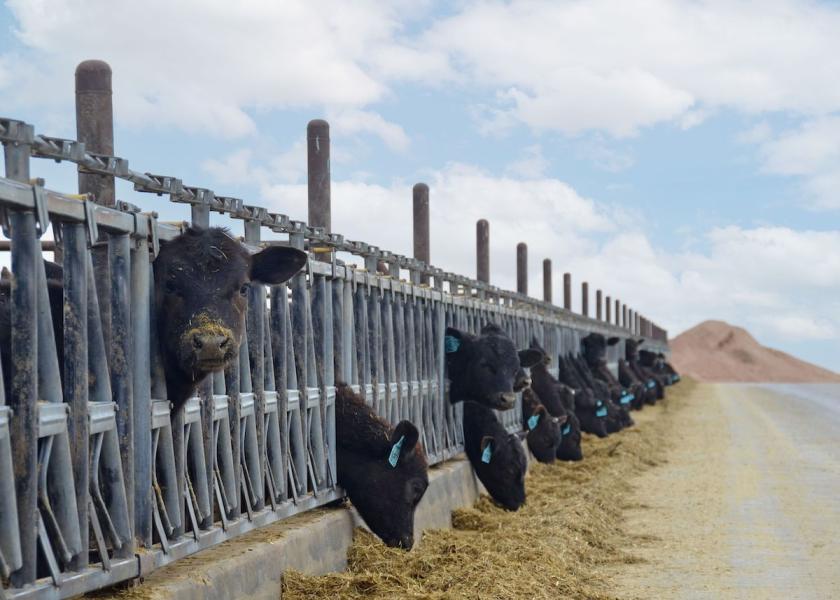8 Reasons Why Beef-on-Dairy Makes the Perfect Cross

The beef-on-dairy revolution is booming. What started as a trend more than a decade ago has quickly grown into a reliable profit stream for dairy farmers across the country. As milk prices continue to sink lower, more and more dairy producers are turning their attention to creating a healthy beef cross calf to generate additional income for their farms.
“Even though we’ve gotten to a position to where beef-on-dairy is becoming more well-known, the reality is dairymen have been beef producers all along – whether that’s been through cull cows are bull calves,” says Dale Woerner, Professor and Cargill Endowed Professor at Texas Tech University. “However, as beef prices have crept up, the beef-on-dairy segment has seen an explosion.”
Just five years ago there were approximately 25.4 million cattle fed through feedlots that were harvested year-over-year, according to Woerner. Traditionally, about 5.1 million of those animals had been purebred dairy heifers or steers. However, this number has seen a drastic change.
“Since 2018, we’ve seen a major shift with beef-on-dairy crossbreds. We don’t know exactly how many of these animals are coming through as crossbreds, but we’re confident that it’s over 3.25 to 3.5 million head of beef-on-dairy cross animals that used to be strictly purebred dairy,” Woerner says.
This proportion has grown tremendously within the last few years, and it is estimated that almost 23% of the total number of fed steers and heifers within the U.S. are actually coming from dairies.
So, what’s the reason for this recent spike? As a result of widespread drought across the mid- and southwest, the beef cow herd has shrunk significantly. However, with more and more dairies relying on beef-on-dairy calves to help turn a profit, these operations have helped fill the meat cases.
“The dairy segment of the beef industry has grown in significance the last few years even more so than it had traditionally,” Woerner adds. “It’s created the perfect storm and that’s why you’re seeing the exceptionally high values.”
As more dairy crossbreds make their way into the marketing chain, Woerner and his research team have closely examined the characteristics of these animals and the products they yield, compared to their full-blood dairy and beef cousins. Their findings regarding major performance and carcass data – via retrospective data evaluation, and their own research -- include:
Feedlot growth – Close-out data evaluations show that the average daily gain and feed-to-gain ratio of crossbreds is significantly better than Holsteins and similar to conventional beef cattle. Woerner said crossbred finishing times that are about 20% faster than Holsteins promote a positive message about sustainability because they produce the same amount of beef in a shorter timeframe and on less total feed.
Quality grade – The Texas Tech researchers found the percentage of crossbreds that grade Choice or higher is roughly equal to, if not better than, conventional beef animals. They appear to inherit the superior marbling capability of their Holstein ancestors but at a faster finishing pace.
Carcass yield -- Crossbreds have a lower dressing percentage than full-blood beef animals, at least partly because they are leaner and thus have lighter carcasses relative to their live weight. They have, on average, an intermediate fat thickness at the 12th rib between that of full-blood beef and dairy animals. Overall, they have higher red meat yield than dairy carcasses, and the best crossbreds are comparable to, or even better than, conventional beef cattle.
Eating quality – A recent study by Woerner’s group showed full-blood Holsteins still take first place in terms of tenderness, followed by crossbreds and then conventional beef. Crossbreds led among the three in terms of superior flavor, with the most “fat-like” and “buttery” flavor ratings. Overall, they were scored the second-most desirable in terms of eating quality behind Holsteins.
Meat color – A major downfall of traditional dairy beef is that it has a darker color and lacks the “cherry-red” appearance of conventional beef, which consumers prefer. The difference is so distinct that most retailers will not market dairy beef and conventional beef in the same meat case. The Texas Tech researchers found that crossbreeding removes the coloring problem, and also results in an additional 12-24 hours of color stability. “This is a huge change in our industry,” Woerner says. “Rather than segregating Holsteins, we can now sell crossbreds together with conventional cattle.”
Muscle shape – The smaller, narrower, and more angular shape of finished Holstein loins has long been a drawback for dairy beef. The Texas Tech researchers found that crossbred longissimus (loin) muscles are larger and rounder than Holsteins, and that consumers could not distinguish their shape compared to those from conventional beef cattle.
Consistency – Dairy animals produce a consistent supply of offspring year-round, which helps improve market stability. Today’s dairy cattle also are highly consistent genetically, creating potential for excellent offspring consistency with correct sire matings.
Traceability – “Record-keeping on U.S. dairies is superior to most conventional beef operations,” Woerner says. “That information on birthdate, performance data, and sire identification is highly valuable for branded beef programs and international markets.”
For more on beef-on-dairy, read:
- Rapidly Growing Beef-on-Dairy Segment Holds Promise for All Stakeholders
- What Beef on Dairy Cross Has the Best Value?
- As Dairy Semen Sales Drop, Beef-on-Dairy Continues to Rise
- Are We Over-vaccinating Beef-on-Dairy Calves?
- Is Your Farm Ready for the Beef-on-Dairy Revolution?







